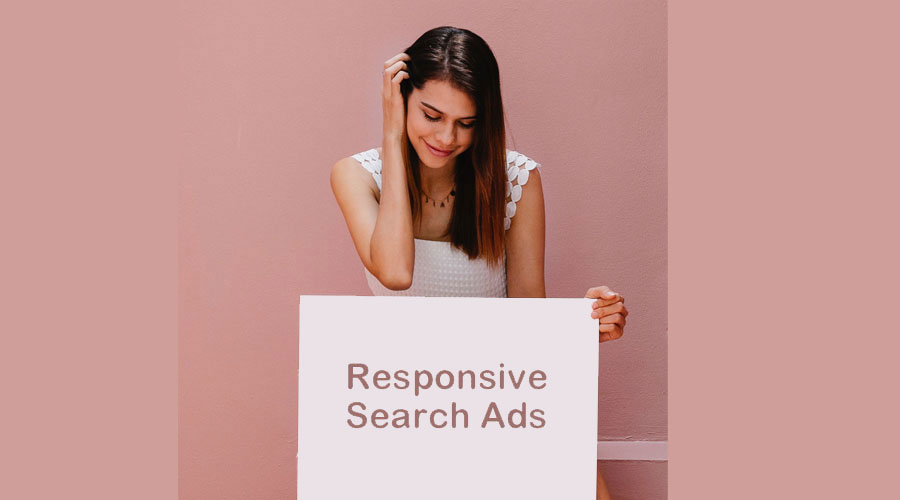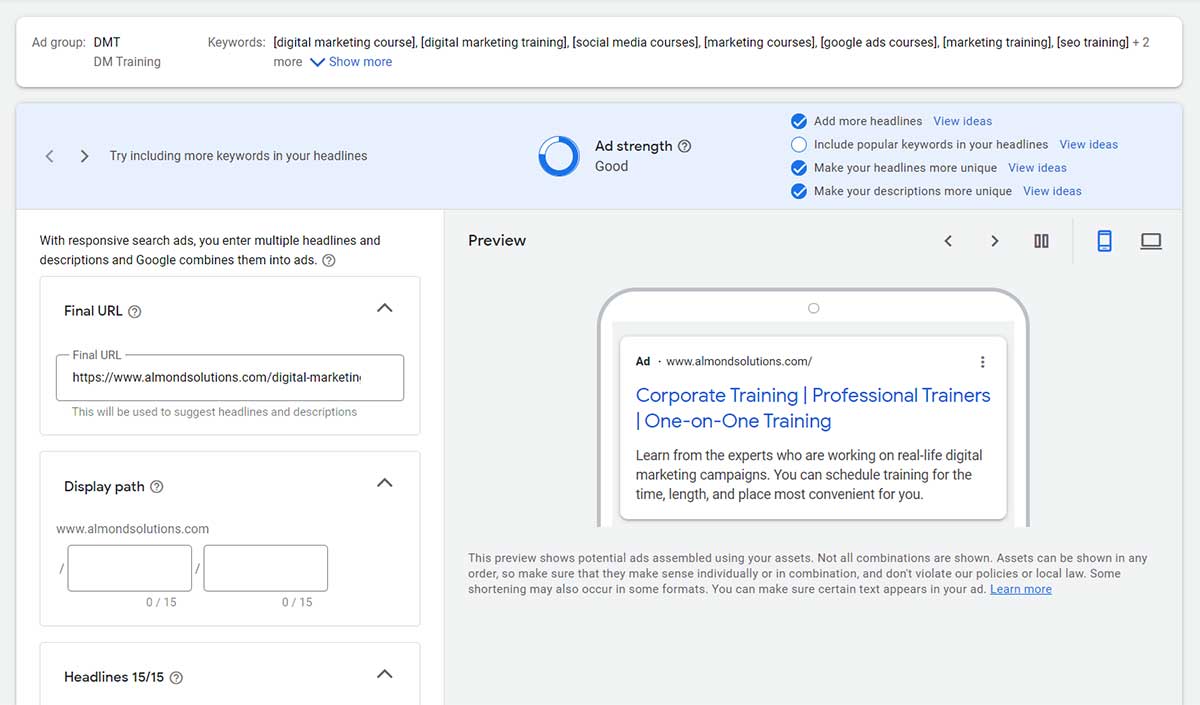All You Need to Know About Google Responsive Search Ads
Originally published: September 15, 2021 11:55:27 AM, updated: November 19, 2022 12:00:00 AM

You have two alternatives when it comes to finding the ideal headlines and descriptions for your Google Ads campaigns: create individual ads and test them, or use Google's Responsive Search Ads (RSAs). Since the launch of Expanded Search Ads in 2016, RSAs have been one of the most significant updates to the platform. You provide various headlines and description alternatives to Google. Google mixes and matches for searchers based on search queries and other proprietary data to show the most effective advertisements.
Update: In March 2021, Google made responsive search ads the default ad format for Search campaigns, replacing expanded text ads. Let's jump ahead to August 2021: ETAs will be phased out by Google on June 30, 2022.
As Google Ads becoming more complicated, there's a lot to learn about multiple ad formats for search ads, especially when comparing expanded text ads to responsive search ads.
So, let's dive right in.
What are responsive search ads?
Responsive search ads, which are currently the default ad type for Google search ads, enable you to create ads that closely match the queries of your potential customers. To get there, Google tests several RSA versions automatically, taking into account all accessible text assets as well as text combinations. As a result, Google determines the most effective ad wording, which is subsequently displayed on the SERP. Note that you can specify specific settings for how Google tests your advertising.
How do Google Ads generate responsive search ads?
Google Ads will arrange the text into several permutations after you've created your headlines and descriptions.
Then, the rest is handled by artificial intelligence (AI), which shuffles the combinations to ensure that customers always see the version of your ad that is most relevant to their requirements and interests. The 15 headlines and four descriptions can be placed in over 40,000 different ways!
The platform tries numerous combinations over time for specific search queries and utilizes machine learning to discover the most effective combinations and most relevant ad versions.
As a result, once the first creative process is complete, Google's AI takes over. This has a lot of advantages for you and your business.
Will all three headlines and two descriptions always appear in responsive search ads?
No! Responsive Search Ads, like Responsive Display Ads, come in various shapes and sizes depending on the size of the user's screen and the page's content. Smaller screens (such as mobile) and active SERPs may display fewer components of a Responsive Search Ad, so don't expect to see your third headline or second description all of the time.
Your Responsive Search Ad, on the other hand, will always include at least two headlines and a description, so it will never be as short as an expanded search ad!
When should responsive search ads be used instead of dynamic search ads?

The goal of responsive search ads is to make your ad campaign easier to understand. All you have to do now is create headers and descriptions, and Google's AI will take care of the rest. When you don't have much time to experiment with or monitor your Key Performance Indicators, they're a better option (KPI).
Responsive Search Ads are primarily used to raise brand awareness and generate leads.
They're good for promoting pages with little content (like an e-commerce site's product page) because Google doesn't look at the content while showing the ad.
However, it is your responsibility to ensure that your ad listings are relevant to the page, as Google will simply substitute the titles and headers you provide in order to find the best combination.
Dynamic search ads are most useful for websites with a decent amount of traffic. When it comes to being relevant to the search term, Google will prioritize the page content over the brand because it chooses the heading for your advertisement.
Dynamic search ads are helpful for content and keyword-based web pages. For example, say that you regularly add new topics or keywords to your existing blogs. You can use them to promote the blogs, as Google will immediately consider all the new information while creating the ad's content.
Tips and best practices for using Google responsive search ads
- Responsive Search Ads work best with more headlines & descriptions
- For best results, highlight something different in each headline & description
- You can pin headlines & descriptions to specific positions in Responsive Search Ads
- Pin very sparingly!
- You can keep your Expanded Text Ads
- Test only one Responsive Search Ad per Ad Group
- Use your top-performing static ads to come up with RSA assets
Benefits of responsive search ads
When combined with Google's intelligent machine learning, responsive search ads may provide you with insights into hundreds of different ad combinations.
Google does the heavy lifting for you regarding ad testing and determining the most effective content to push to your viewers with responsive search ads. This not only saves you time in the short term but also provides you with a wealth of data to use in future initiatives.
What's the best part? All of the information is provided by Google for free. All you have to do now is pay your regular PPC rates, and Google will handle the rest.
Final word
Your ad campaigns will be more versatile and straightforward with responsive search ads.
The concept is that you give titles and descriptions for your advertising, and Google's AI alternates and tests with them before selecting the best one for you. They're best for generating leads, and optimizing them necessitates a thorough understanding of CTAs.
Got any questions? Ping me on Twitter.
Join over 130,000 SEO and Google Ads experts. We provide a community to help you engage and learn from industry experts and influencers. Join Now
What if your entire business could run itself — and your work hours got shorter?